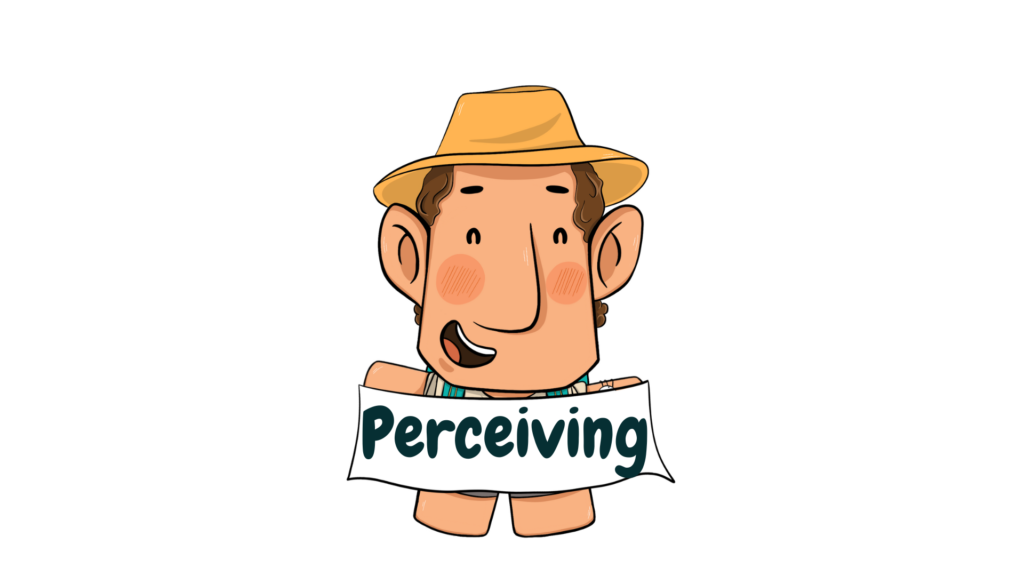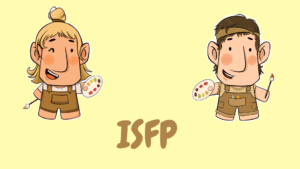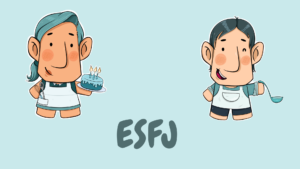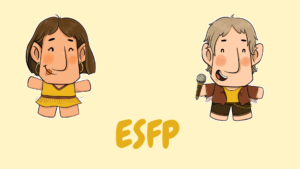
Are you the type of person who can’t decide between a burger or pizza for dinner? Do you show up late to appointments because you couldn’t decide what to wear? Are you the master of last-minute schedule changes because you just can’t commit to plans? Congratulations, you’re a perfect blend of indecisive and spontaneous! Embrace your unique mix of traits and celebrate the chaos within yourself. You’re not just a Judger or a Perceiver – you’re a beautiful, confusing mess of both! So go ahead, be fashionably late to that meeting and change your mind five times before making a decision. It’s all part of your charm! Just remember, it’s okay to be a little bit of both – it’s what makes you, well, you!
Where Did the Perceiving Word Come From?
The term “Perceiving” in the Myers-Briggs Type Indicator (MBTI) carries a humble origin that dates back to its linguistic roots. Originating from Old English and Germanic languages, the concept of Perceiving can be traced to its ancestral forms, reflecting a journey of evolution and refinement across centuries.
In ancient Old English, the essence of Perceiving found expression through words that denoted observation, awareness, and receptivity to the world around us. Through the linguistic tapestry of antiquity, these foundational terms evolved and converged, paving the way for the modern-day interpretation we now recognize as “Perceiving” within the framework of the MBTI.
As languages evolved in tandem with human experiences and societal progress, the notion of Perceiving transitioned from its early forms to encompass a nuanced spectrum of characteristics, including adaptability, spontaneity, and openness to possibilities. This subtle yet profound evolution captured the essence of how individuals engage with information, process stimuli, and navigate the complexities of existence in a world teeming with diversity and dynamism.
In the realm of the MBTI and personality theory, the term “Perceiving” carries a legacy of curiosity, flexibility, and receptiveness to the ever-changing landscape of human experiences. Rooted in the humility of its linguistic heritage, Perceiving invites individuals on a journey of self-discovery, encouraging them to embrace the ebb and flow of life’s intricacies with grace and openness.

Broadened Perspective on Perceiving
In the expansive domain of the Myers-Briggs Type Indicator (MBTI), the concept of “Perceiving” unveils a profound yet unassuming perspective through which individuals traverse the intricate tapestries of their inner and outer realms. Derived from a rich history of language, the term “Perceiving” transcends mere observation, embodying a deeper essence of openness, adaptability, and an embrace of life’s enigmatic wonders.
Born from its modest origins, Perceiving acts as a gentle beacon, beckoning individuals to cultivate a widened outlook on how they engage with information, interpret stimuli, and harmonize with the ever-changing cadences of existence. This nuanced comprehension fosters a spirit of inquisitiveness, resilience, and an eagerness to navigate the evolving landscape of possibilities that encircle us.
In this intricate exploration of Perceiving within the MBTI framework, the term exudes a subtle sophistication, encouraging individuals to gracefully immerse themselves in the intricate ballet of observation, introspection, and receptive discernment as they traverse the multifaceted dimensions of their internal and external realities.
Heightened Characteristics of Perceiving Individuals
· The Spontaneous Sorcerer
This individual excels at conjuring up surprises but mysteriously plans for unplanned eventualities, turning predictability into an unexpected adventure.
· The Flexible Forecaster
Despite effortlessly predicting the unpredictable, this character comically gets entangled in routines, showing a talent for foreseeing chaos but stumbling in the realm of mundanity.
· The Open-Minded Oracle
Master of envisioning all possibilities, except when faced with the perplexing decision of what to eat for lunch, revealing a mind open to grand ideas but locked in a culinary quandary.
·The Adaptive Alchemist
Skillfully turning disorder into gold, yet magically misplacing keys in the process, showcasing a talent for transforming chaos while letting keys disappear like magic tricks.
·The Curious Conjurer
A wizard at unraveling the mysteries of the universe, yet mysteriously forgets the location of their phone, proving an insatiable curiosity for cosmic enigmas paired with an absent-minded flair.
· The Possibility Ponderer
Embracing a myriad of choices with gusto, but deliberating for ages on a simple movie selection, illustrating a flair for exploring endless options while getting caught in the whimsy of decision-making paralysis.

Development and Nurturing of Perceiving
Developing the art of perceiving is like training for the Olympics of self-discovery—minus the spandex! It starts with a curiosity so fierce you’d think you were a cat chasing laser pointers. You’ve got to be open-minded, ready to explore perspectives like a tourist in a foreign land (with extra snacks, of course). Active listening? Think of it as eavesdropping on life’s gossip, gaining insights into human behavior while nodding like a wise sage. Diving into new experiences is essential—like jumping into a pool of ideas without checking the temperature first! And don’t forget self-reflection; it’s like cleaning out your mental attic, discovering biases you didn’t even know you had. In short, mastering perception is a delightful journey filled with curiosity, empathy, and maybe a few awkward moments—but hey, that’s what makes it fun!
Pros and Cons of Being a perceptive
Pros of Being a perceptive
The Spontaneous Sorcerer (Magic in the Moment)
They’re the master of improvisation, making magic out of the unexpected. No plan, no problem—they thrive in the here and now. Abracadabra, let’s see what the day brings!
The Flexible Flamingo (Bending with the Breeze)
Change is their middle name. They adapt like a chameleon, embracing the chaos with open arms. Who needs a fixed schedule when they can dance with the winds of change?
The Curious Cat (Explorer of All Realms)
Their curiosity knows no bounds, constantly seeking new experiences and soaking up information like a sponge. Life is their playground, and the world their treasure trove of discoveries. How many tabs do they have open in their brain right now?
The Zen Zenith (In the Eye of the Storm)
Chaos outside, calm inside. They have a knack for staying cool under pressure, riding the waves of uncertainty with a serene smile. When life gives them lemons, they make lemonade with a twist!
The Innovation Instigator (Eureka Ambush Artist)
Their mind is a breeding ground for creative sparks. Unconventional ideas flow like a river, and they’re always a step away from a genius breakthrough. What’s the next big thing they’ll come up with?
Cons of Being a perceptive
The Procrastination Prodigy (Master of Tomorrow)
Why do today what they can put off until tomorrow? Deadlines are just gentle suggestions, right? The art of procrastination is their secret talent, delaying the inevitable with flair.
The Decision Dilemma Devil (Crossroads Connoisseur)
Indecision is their unwelcome companion, making even simple choices feel like climbing Mount Everest. Should they? Could they? Would they? The internal debate rages on, creating a decision-making saga fit for a trilogy.
The Scatterbrain Symphony (Maestro of Multitasking)
Their mind resembles a whirlwind of thoughts, ideas, and half-baked plans. Focus is a distant cousin they rarely visit, lost in the symphony of distractions playing in their head. Juggling tasks like a pro, forgetful like a goldfish!

Perceiving Assessment Methods
MBTI Questionnaire
The MBTI questionnaire is a widely used tool that assesses an individual’s psychological preferences across various dimensions, including perception.Respondents answer a series of questions designed to identify their preferences for perceiving information. The questionnaire categorizes individuals into one of the MBTI types based on their responses.
Self-Assessment Exercises
Self-assessment exercises involve individuals reflecting on their own behaviors, tendencies, and preferences related to perception. Through exercises like journaling, self-reflection prompts, or guided activities, individuals can gain insights into how they perceive and process information in different situations.
Feedback from Others
Seeking feedback from friends, family, or colleagues can offer an external perspective on an individual’s perception style. Others may observe patterns in how an individual gathers information, makes decisions, or interprets the world, providing valuable insights into their perception preferences.
Psychological Assessments
Psychological assessments, conducted by qualified professionals, can provide in-depth insights into an individual’s cognitive functions, including perception. These assessments use standardized tests and tools to evaluate various aspects of perception, helping individuals understand their unique cognitive processes and preferences.
Behavioral Observations
Observing how individuals interact with their environment, respond to stimuli, and make decisions can offer valuable clues about their perception style. By paying attention to behaviors such as information gathering methods, decision-making processes, and response to new situations, observers can gain a better understanding of how individuals perceive the world around them.
The Abundance of Perceptive People
In the MBTI framework, individuals are sorted into 16 personality types through four dichotomies, including Judging (J) and Perceiving (P). Roughly half of the population aligns with the Perceiving (P) category, while the remaining half resonates with the Judging (J) category. This near-equal split illustrates a harmonious blend of individuals who embrace spontaneity and flexibility (Perceiving) and those who value organization and decisiveness (Judging). Each preference offers distinct strengths and strategies for making decisions, devising plans, and engaging with their surroundings. This balance between Perceiving and Judging tendencies showcases the diversity of cognitive approaches and underscores how individuals leverage these preferences to navigate life’s challenges and opportunities effectively.




